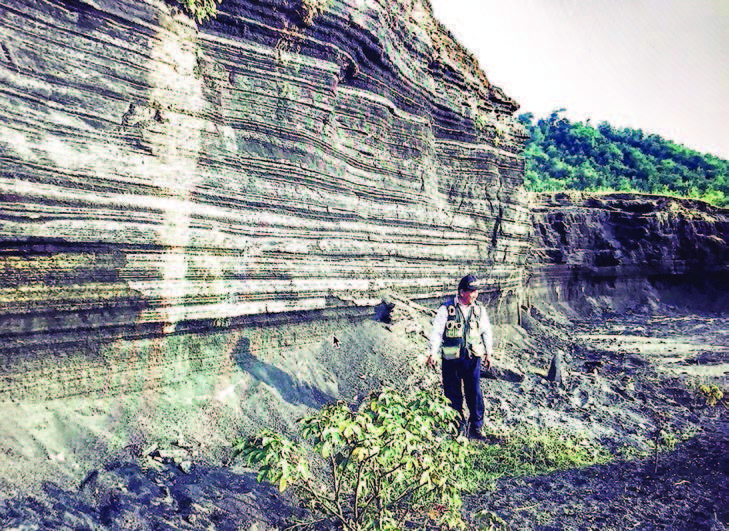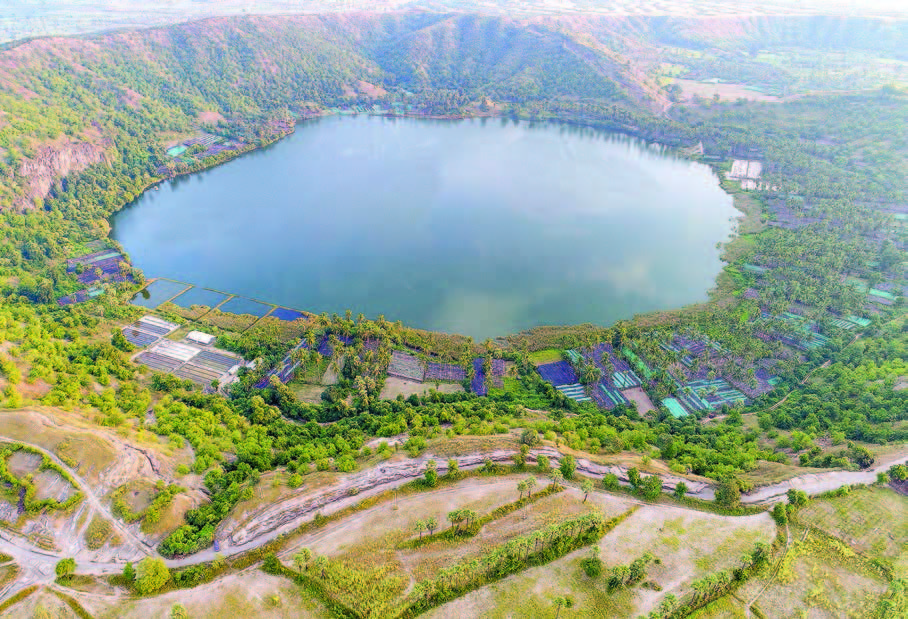25 Jan
Geoparks
UNESCO Global Geoparks are single, unified geographical areas where sites and landscapes of international geological significance are managed with a holistic concept of protection, education and sustainable development. A UNESCO Global Geopark uses its geological heritage, in connection with all other aspects of the area’s natural and cultural heritage, to enhance awareness and understanding of key issues facing society, such as using our Earth’s resources sustainably, mitigating the effects of climate change and reducing the impact of natural disasters. By raising awareness of the importance of the area’s geological heritage in history and society today, UNESCO Global Geoparks give local people a sense of pride in their region and strengthen their identification with the area. The creation of innovative local enterprises, new jobs and high quality training courses is stimulated as new sources of revenue are generated through geotourism, while the geological resources of the area are protected.
History of Geoparks
The philosophy behind the Geoparks concept was first introduced at the Digne Convention in 1991 as a mean to protect and promote geological heritage and sustainable local development through a global network of territories containing geology of outstanding value.
In 1997, in direct response to the ‘Declaration of the Rights of the Memory of the Earth”, the Division of Earth Sciences of UNESCO introduced the concept of a UNESCO Geoparks Programme to support national and international endeavours in Earth heritage conservation.
In 2000, representatives from four European territories met together to address regional economic development through the protection of geological heritage and the promotion of geotourism. The result of this meeting was the signing of a convention declaring the creation of the European Geoparks Network (EGN).
At the moment, there are 161 UNESCO Global Geoparks in 44 countries; 81 UNESCO Global Geoparks in Europe, 65 Geoparks in Asia and Pacific, 8 Geoparks in Latin America and Caribbean, 5 Geoparks in North America (Canada) and 2 Geoparks in Africa.
Planet Earth and Homo Sapiens
About 13.5 billion years ago, matter, energy, time and space came into being in what is known as the Big Bang. The story of these fundamental features of our universe is called Physics.
About 300,000 years after their appearance, matter and energy started to coalesce into complex structures, called atoms, which then combined into molecules. The story of atoms, molecules and their interactions is called Chemistry. About 3.8 billion years on a planet called Earth, certain molecules combined to form particularly large and intricate structures called organisms. The story of organism is called Biology. About 70,000 years ago, organisms belonging to the species Homo sapiens started to form even more elaborate structures called cultures. The subsequent development of these human cultures is called History.
Like it or not, we are members of a large and particularly noisy family called the great apes. Our closest living relatives include Chimpanzees, gorillas and Orang-Utans. The chimpanzees are the closest. Just 6 million years ago, a single female ape had two daughters. One became the ancestor of all chimpanzees, the other is our own grandmother. (Y.N. Harari, 2015)
Man was the last to come but the first to use his brain for the purpose of conquering the forces of nature. It was a world where you must either eat or be eaten, and life was very unhappy because it was full of fear and misery (H.W. Van Loon, 1967).
In using brain and intelligence, there appear social and environmental friendly positive outlook and opposite destructive negative outlook. Hence, we must encourage and endeavour to respect and restore the values of social, environmental, cultural, national and archaeological heritage and equitably share the fruits of our concerted efforts. Those two opposite outlooks are also based on mainly their respective genes and environment. It must be properly managed for the systematic utilisation, conservation and propagation of know-how and expertise concerning invaluable natural resources of the Mother Earth with sustainable development and exploitation in the long run. To improvement the studies, conservation sustainable development of the aforesaid interrelationship between Men and the Mother Earth, it is imperative to establish UNESCO Global Geoparks as many as possible here in Myanmar.
Our Future
There is a fear today that our planet, an isolated island in space, is facing limitations of our resources in a variety of areas, including soils, fresh water, forests, rangelands, and ocean fisheries. The primary question from above environmental perspective and in terms of history of humans on Earth is: Will we recognize the limits of Earth’s resources before it too late to avoid the collapse of human society on a global scale? Today there are no more frontiers on Earth, and we have a nearly fully integrated global economy. With our modern technology, we have the ability to extract resources and transform our environment at rates much faster than any people before us. We need to choose the two ways: Develop a sustainable global economy that ensures the survival of our resource base and other living things on Earth, or suffer the consequences.
Environment
In the early 1970s, we were just becoming conscious of environmental problems and were more concerned with identifying the problems rather than dealing with solutions.
Since then, the field of environmental geology has grown substantially , and there are many practicing professional environmental geologists. The focus has also shifted to finding solutions to environmental problems. This requires increased understanding of the application of geologic processes to the environment. As a result, we need to know more about how the earth works and how the subject of geology interrelates with other disciplines, such as biology, chemistry, physics, and geography.
Environmental geology, however, is more than just science. Our science may provide potential solutions to environmental problems and outline the risks of such processes as earthquakes and flooding. However, what we actually decide to do about our environmental problems is more related to our value systems. As a result, subjects such as psychology, social anthropology, history, human geography, political science, law and society, and economics come to the forefront. However, many of these subjects are difficult, and considerable study is necessary to understand them thoroughly. Finally, more advanced courses in areas such as hydrogeology, geochemistry, and seismology are suggested for those students who wish to pursue these subjects further.
Conservation
In 1892, in United States of America, Muir founded the famous Sierra Club in California and it is still an influential NGO over a century later. But it was not until 1908 that US President Theodore Roosevelt used the name “conservation” to describe the activities and the movement.
Roosevelt’s home was in New York but he went to North Dakota in 1883 and decided to develop his interest in cattle ranching. He was brought to the west by the prospect of big game hunting, but when he arrived, the last large buffalo herds were gone as a result of overhunting and disease. Throughout his time in North Dakota, Roosevelt became more and more concerned about the disappearance of some species. Roosevelt therefore developed a keen interest in conservation and what would nowadays be called “sustainable land use”.
Conservation Science
The Conservation Science (cultural heritage) means the interdisciplinary study of care and protection of art, architecture, and other cultural works. The Environmental Science means interdisciplinary study of protection of environment and natural resources. In helping our planet Earth we can play our part as environmental conservation, animal conservation, marine conservation and human conservation. There are various type of conservation such as biodiversity conservation, water conservation, ocean conservation, soil conservation, grazing lands conservation, forest conservation, mineral conservation, energy conservation and urban conservation. Each kind of conservation has different problems and solutions.
There are also 12 types of conservation career for young generation to serve their country. Those are ecological consultancy career, get your hands dirty conservation career, big NGO conservation career, little NGO conservation career, big famous TV star conservation career, conservation photographer/filmmaker career, academic conservation career, disappear off half way around the world conservation career, technology/ start-up conservation career, corporate social responsibility career, wildlife vet career option, supporting conservation work at zoos, philanthropic conservation career.
Conservation Practice
Conservation practice should be founded on good science and researchers play a leading role. Conservation is done by different stakeholders; government staff, private sector. On the other hand Conservation NGOs can help bridge the gap between science and conservation implementation.
The way forward for conservation in the rapidly changing areas of tropical Southeast Asia will increasingly involve inputs not just from ecologists but also from business leaders, social scientists, activists, and policy makers. In the interest of biodiversity, conservation scientists should take the lead in such multidisciplinary problem-solving teams (Lynam et al.,2016).
The conservation scientists will obtain following opportunities in conservation practice. i. Conduct academic research and exploration, ii. Join a government agency, iii. Participate in collaborations with communities, park managers, security professionals, tour operators, iv. Join advocacy groups, v. Join UN and International group, vi. Join a conservation NGO, foundation of think-tank.
Sustainability
One definition is that sustainability is development that ensure that future generations will have equal access to the resources that our planet offers. Sustainability also refers to types of development that are economically viable, do not harm the environment, and are socially just. Sustainability is a long-term concept, something that happens over decades or even over hundreds of years. It is important to acknowledge that sustainability, with respect to use of resources, is possible for renewable resources such as air and water. Sustainable development with respect to nonrenewable resources such as fossil fuels and minerals is possible by, first, extending their availability through conservation and recycling; and, second, rather than focusing on when a particular nonrenewable resource is depleted, focusing on how that resource is used and developing substitutes for those uses.
The United Nations 2030 Agenda for Sustainable Development
The United Nations 2030 Agenda for Sustainable Development defines 17 Sustainable Development Goals to be universally applied in all countries. Many of these goals will demand proper management of the nature, including both geodiversity and biodiversity. Geoconservation may help to: increase quality of education, have clean water, promote decent work and economic growth, organize sustainable cities and communities, understand climate change, protect, restore and promote sustainable use of terrestrial ecosystems, combat desertification, and halt biodiversity loss.
References:
1. UNESCO. UNESCO Global Geoparks contributing to the Sustainable Development Goals
2. Yuval Noah Harari, 2011. Sapiens a brief history of humankind
3. H. W. Van Loon, 1967. History of mankind.
Than Htun (Myanmar Geosciences Society)




